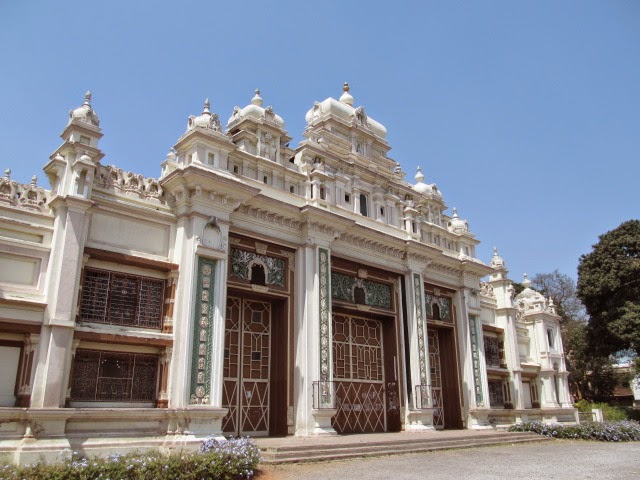Jaganmohan Palace

The Palace Gate: Jaganmohan Palace In Mysore, one is never too far from royalty. Located west of the illustrious Mysore Palace, the Jaganmohan Palace is one of the seven palaces that the Wodeyar kings built in and around the city, making it a true recipient of the royal legacy. Within the main city itself, there are seven such palaces. As one enters the Jayachamarajendra Art Gallery, located inside the palace, one is greeted with a striking masterpiece adorned with intricate carvings that have been carved in a short span of just 70 days. Venturing deeper, one finds wooden doors that narrate the tale of Dasavatharam , the ten incarnations of Lord Vishnu. The Jaganmohan Palace was built during the reign of Krishnaraja Wodeyar-III and was completed in 1861. Since the main Ambavilas Palace, widely familiar as the Mysore Palace was burnt down in a fire, the Jaganmohan Palace was commissioned to serve as the residence of the royal family until 1912, the year when the Mysore Palace

